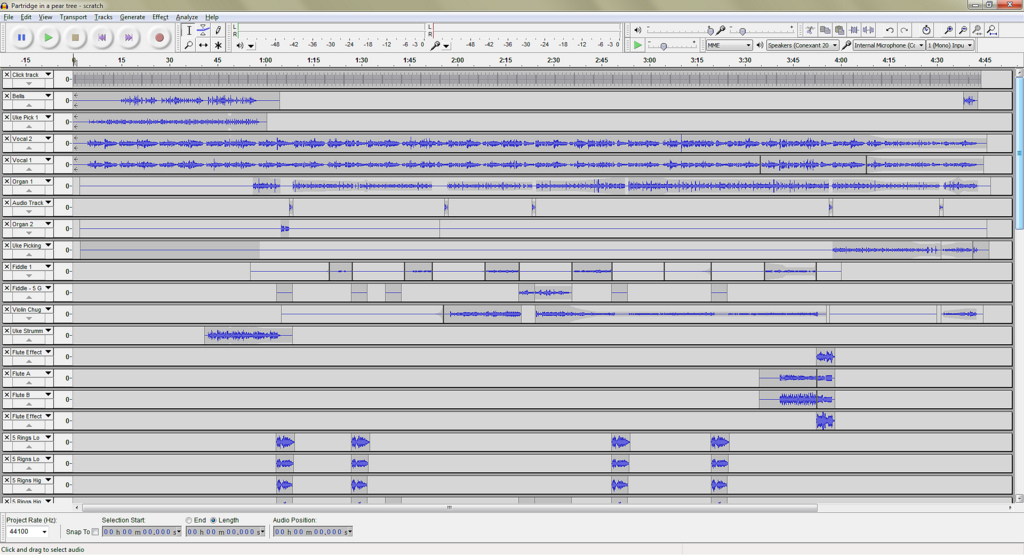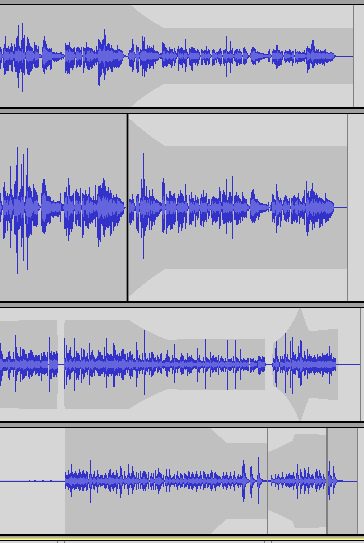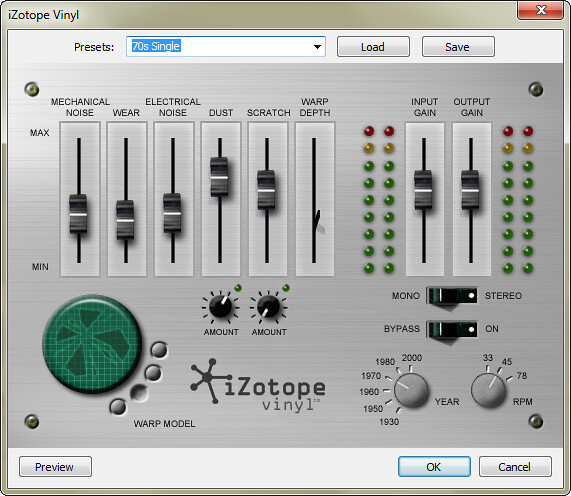My wife and I recorded a Christmas song: Twelve Days of the Partridge
Since 2007, my wife and I have been contributing a song to the Familyre Christmas compilation albums. You can download this year's for free, and you can play them all online on Bandcamp. My wife had written original songs each previous year; this year I suggested we just record a classic like The Twelve Days of Christmas.
You can stream or download our song - Twelve Days of the Partridge - here (perhaps while reading this post):
You can stream or download the full album here:
Twelve Days: trickier than you'd think
I originally suggested Twelve Days of Christmas so we could just take it easy this year; I probably should have thought about that a bit first. As an old traditional song, The Twelve Days of Christmas has an interesting song structure. It bounces between 4/4 and 3/4 time, with some pickup notes just to mix things up a bit. It's odd enough that Wikipedia actually has a section talking about the song structure, irregular meter, and other things that give electronic recording people headaches:
The time signature of this song is not constant, unlike most popular music. This irregular meter perhaps speaks for the song's folk origin. The introductory lines, such as "On the twelfth day of Christmas, my true love gave to me", are made up of two 4/4 bars, while most of the lines naming gifts receive one 3/4 bar per gift with the exception of "Five gold(en) rings," which receives two 4/4 bars, "Two turtle doves" getting a 4/4 bar with "And a" on its 4th beat and "Partridge in a pear tree" getting two 4/4 bars of music. In most versions, a 4/4 bar of music immediately follows "Partridge in a pear tree." "On the" is found in that bar on the 4th (pickup) beat for the next verse. The successive bars of 3 for the gifts surrounded by bars of 4 give the song its hallmark "hurried" quality.
The second to fourth verses' melody is different from that of the fifth to twelfth verses. Before the fifth verse (when "five gold(en) rings" is first sung), the melody, using solfege, is "sol re mi fa re" for the fourth to second items, and this same melody is thereafter sung for the twelfth to sixth items. However, the melody for "four colly birds, three French hens, two turtle doves" changes from this point, differing from the way these lines were sung in the opening four verses.
Credits and stuff
My wife Rachel did most of the work on this one: singing, acoustic guitar, ukulele, flute, xylophone.
I played bass, organ, electronic drums (most of which I decided to remove in the mix), and ran most of the recording and mixing. My favorite part was the organ - I used my brother Glen's Nord Electro 2 on a drawbar organ setting with an auto-wah. I love that sound.
We had a bunch of help from our friends:
- Brian Galloway provided some tasty electronic guitar licks.
- John Ciccolella hooked us up with some awesome fiddling (and help with the arrangement).
- Andrew Smith did the work of twelve men (twelve drummers drumming)
- Our daughters and friends sang the children's choir bit on the 12th day.
Nerdy recording stuff
I decided to do the editing and mixing in Audacity. It's picked up a lot of features over the past few years that really helped, including track groups, envelopes, and solid VST effect support. We ended up with a few dozen live tracks, so there were two main jobs in the mix - fixing little timing issues to tighten it up, and getting the levels right so all the parts were audible.
Handling timing
With a big song like this, a click track is a must. I also made use of a nice plugin called Regular Interval Labels to visually align audio clips. The big benefit that it provides is that the clips snap to nearest labels a bit, so it's much easier to align them.
Handling volume
For a mix like this, the trick is to make everything audible without clipping. The trap is to avoid saying "Hmm, can't hear the second violin track, better turn it up." Instead, I focus on listening for which tracks can be turned down and still be audible. For a dynamic mix which responds to new instruments joining part way through the song, I really rely on the volume envelopes:
VST Plugins
I made some electronic drum loops which sounded cool in parts, but it was a pretty busy mix and we ended up pulling most of them out. Rachel and I joked around with putting one halfway through the song, as a brief intermission. It cracked us up, so we decided to keep it. The problem was that it kind of jumped out since it was really punchy, so we ended up thinning it out so it sounded like an old record. We used iZotope Vinyl (free), a classic EQ setting, and dBlue Tape Stop effect (also free). I made the loop in FL Studio Pro - it's intentionally a little out of time so it sounds more natural.
Last year's track - Glory
If you like this one, you might like the song we did last year:
Merry Christmas!


